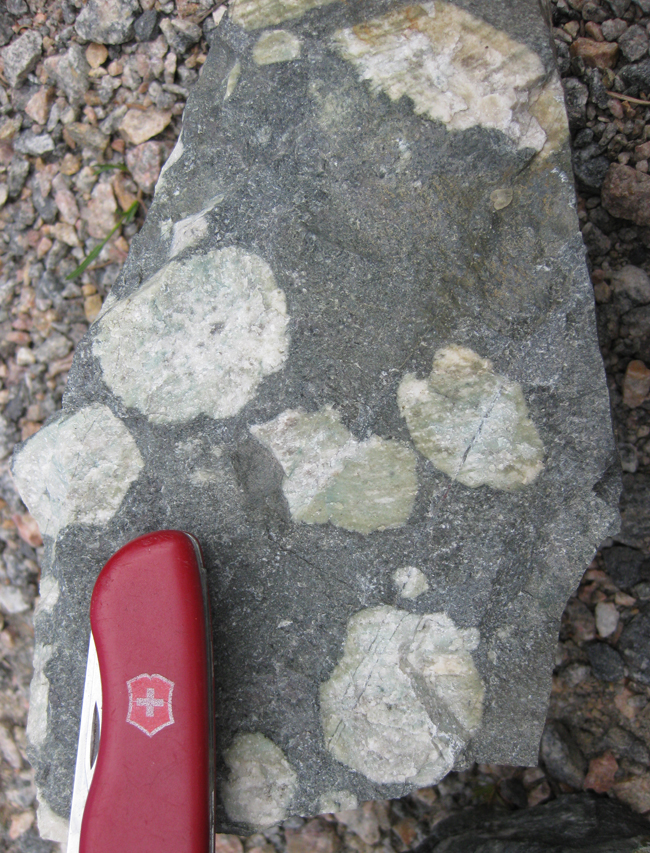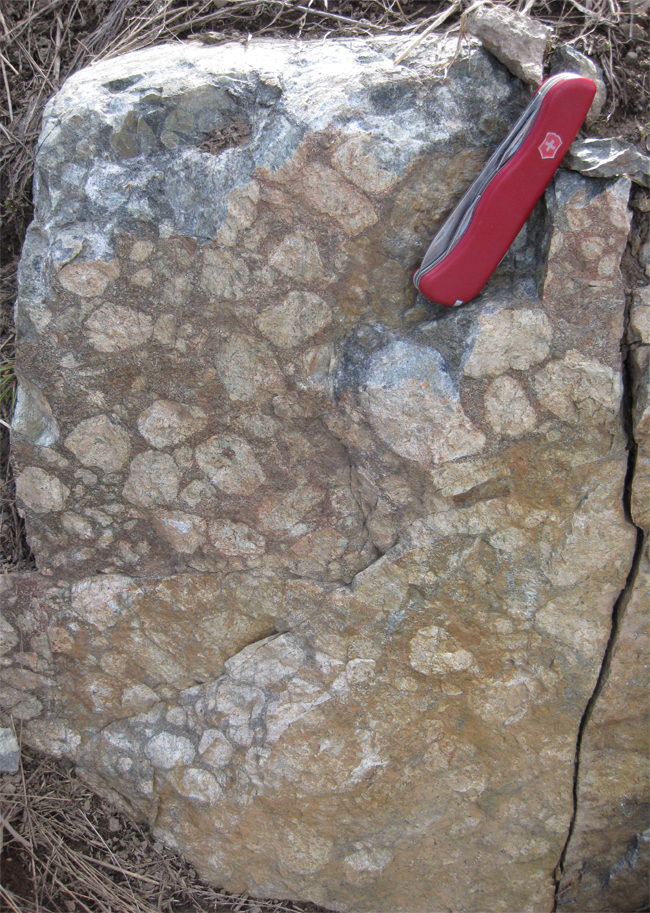Here’s a pretty rock to liven up your Monday:

This is a deeply porphyritic rock known locally and colloquially as “leopard rock.” It outcrops along Route 212 (the Beartooth Highway) between Cooke City and Red Lodge, Montana. This location is northeast of Yellowstone National Park.

The spots you see are feldspar mega-crysts: it takes time to grow crystals this big, so these must have formed over a long time, as the magma was only slowly losing heat, deep in Earth’s interior. The darker color is a finer-grained ~basaltic groundmass – the magma that chilled rapidly after emplacement of the dike into cold country rock. And so we would annotate the previous picture something like this:

These rocks were intruded into the Archean “Wyoming Terrane” basement as mafic dikes during the Proterozoic.
Some of the feldspar megacrysts are really big:

An outcrop of “leopard rock,” showing the effects of weathering on highlighting the two parts of the rock:

Similar:



Lastly, consider this weird one: perhaps the contact zone where the leopard rock dike met country rock that was pliable and goopy during intrusion? The country rock foliation definitely appears to wrap around the feldspar megacrysts…

(Note: we wetted this last sample for better photo contrast.)

Any chance the dikes could be Eocene, related to the Absaroka magmatism?
These have been dated — follow the link in the post to Harlan’s GMU page on this topic. The dates are 2.5-1.1 Ga, as I recall.
Downstream of the Beartooths, after pieces of these leopards have broken from their dikes and tumbled down Rock Creek or the Stillwater into the Yellowstone, they become palm sized lovely things, smoothed, with their feldspar bright white. I have rough slab pieces from the Plateau, big tumbled pieces and the final small rounded items from the gravel bars of the Yellowstone. I enjoy thinking of how far they have come and how much time their “trip” took
I picked up a piece nearly 25 years ago and I’d like to pick up another. Where, exactly on 212 is the outcrop?
Wonderful article & I’m curious because i found one beautiful 9 lb River polished example in NW Lower Michigan and I’m assuming it came down from Ontario during the Glaciers.
What’s different about mine is the Alkali Feldspar is more blush-pink and w/in this rock, many are split and moved as if this 9lb rock had its own tectonic plates. Looks to have been exposed to great heat & pressure. A few minute traces of iron also can be seen. The other interesting feature is there is an area that has a green colored glassy material & I’m assuming Olivine (?).
Sadly, my my father at 94 who was a petro-Geologist has bad eyesight …. so he would not be able to ID.
Thanks for an interesting article that inspired me to do more research. M
I have been wondering about these rocks that I see on the river forever. Thanks for clarifying.!
Really great to find some information on this material, as I have seen it both in the Yellowstone around Billings, and the mentioned dikes in the Beartooths ever since I was a kid and started being interested in rocks. Are we safe to call it an Amygdaloidal basalt – even though it was never extruded onto the surface?
I was once told that leopard rocks are found only in Wyoming and somewhere in Africa maybe? Is that true?